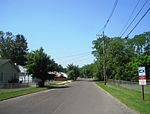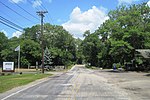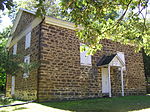Pemberton Township School District
Pemberton Township School District is a comprehensive community public school district headquartered in Pemberton Township, New Jersey, United States, serving students in pre-kindergarten through twelfth grade. The district is one of 31 former Abbott districts statewide that were established pursuant to the decision by the New Jersey Supreme Court in Abbott v. Burke which are now referred to as "SDA Districts" based on the requirement for the state to cover all costs for school building and renovation projects in these districts under the supervision of the New Jersey Schools Development Authority. The school district serves Pemberton Township (including the communities of Browns Mills, Country Lake Estates, Pemberton Heights and Presidential Lakes Estates and the Pemberton Township portion of Fort Dix) along with Pemberton Borough.As of the 2021–22 school year, the district, comprised of nine schools, had an enrollment of 4,443 students.The district is classified by the New Jersey Department of Education as being in District Factor Group "B", the second lowest of eight groupings. District Factor Groups organize districts statewide to allow comparison by common socioeconomic characteristics of the local districts. From lowest socioeconomic status to highest, the categories are A, B, CD, DE, FG, GH, I and J.
Excerpt from the Wikipedia article Pemberton Township School District (License: CC BY-SA 3.0, Authors).Pemberton Township School District
Calle 69, Bogotá Localidad Engativá
Geographical coordinates (GPS) Address Nearby Places Show on map
Geographical coordinates (GPS)
| Latitude | Longitude |
|---|---|
| N 39.974615 ° | E -74.679487 ° |
Address
Calle 69
Calle 69
111061 Bogotá, Localidad Engativá
Colombia
Open on Google Maps









